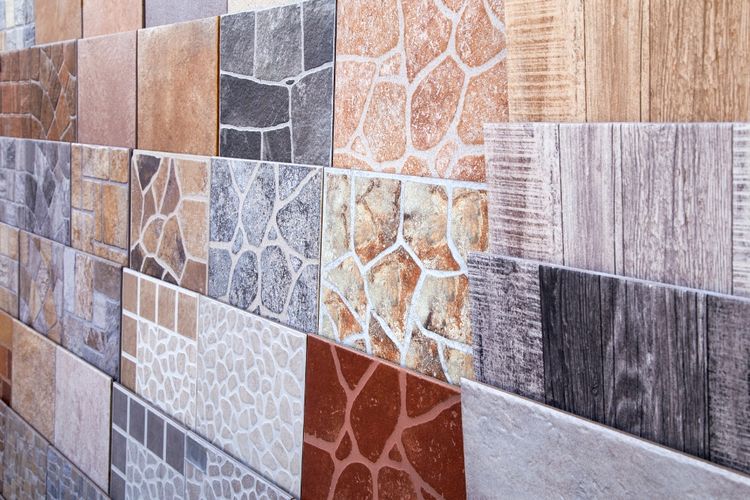Embracing Wabi-Sabi: The Art of Imperfect Beauty in Home Design
In a world obsessed with perfection, a quiet revolution is taking place in home interiors. Enter wabi-sabi, the ancient Japanese philosophy that celebrates the beauty of imperfection, impermanence, and incompleteness. This centuries-old concept is finding new life in modern homes, offering a refreshing counterpoint to the polished aesthetics that have long dominated interior design. As we explore the nuances of wabi-sabi, we'll discover how this timeless approach can transform living spaces into serene havens that reflect the authentic beauty of life's natural cycles.

In traditional Japanese aesthetics, wabi-sabi manifested in rough ceramic tea bowls, weathered wooden structures, and asymmetrical flower arrangements. These elements stood in stark contrast to the ornate and symmetrical designs favored in Western cultures. The philosophy encouraged an appreciation for the natural aging process of materials and the subtle imperfections that make each object unique.
Translating Wabi-Sabi into Modern Interiors
Today’s interpretation of wabi-sabi in home design goes beyond simply incorporating Japanese-inspired elements. It’s about creating spaces that feel authentic, lived-in, and deeply connected to nature. This approach celebrates the beauty of raw materials, embraces asymmetry, and values handcrafted items over mass-produced goods.
In a wabi-sabi inspired home, you might find:
-
Unfinished or reclaimed wood surfaces that showcase knots and grain patterns
-
Handmade ceramics with slight irregularities
-
Natural fabrics like linen and cotton, left unironed to maintain their organic texture
-
Weathered metal accents that develop a patina over time
-
Stones, branches, and other natural elements incorporated as decor
The key is to create a harmonious balance between simplicity and depth, allowing each piece to tell its own story within the larger narrative of the space.
The Color Palette of Imperfection
Wabi-sabi interiors typically feature a muted, earthy color palette that draws inspiration from nature. Soft whites, warm greys, and gentle beiges form the foundation, often complemented by deeper tones of charcoal, rust, and forest green. These colors create a sense of calm and groundedness, allowing the textures and imperfections of materials to take center stage.
Unlike the stark white walls often associated with minimalism, wabi-sabi embraces walls with character. This might mean leaving exposed brick or plaster, or opting for limewash paint that creates subtle variations in tone and texture. The goal is to create depth and interest without overwhelming the senses.
Curating with Intention: Less, but Better
At its core, wabi-sabi encourages a mindful approach to consumption and decoration. Rather than filling spaces with numerous objects, this philosophy advocates for careful curation. Each item should serve a purpose or hold deep personal meaning. This might mean displaying a cherished family heirloom alongside a perfectly imperfect handcrafted vase, or leaving negative space to allow individual pieces to breathe.
This intentional approach extends to furniture selection as well. Wabi-sabi interiors often feature low-profile furniture with clean lines, allowing the beauty of natural materials to shine. A well-worn leather armchair, a simply styled wooden table, or a softly rumpled linen sofa can all embody the wabi-sabi ethos.
Embracing the Cycle of Life in Design
One of the most profound aspects of wabi-sabi is its acceptance of the natural cycle of growth, decay, and renewal. In home design, this translates to an appreciation for how materials and objects change over time. Instead of discarding items as they show signs of wear, wabi-sabi encourages us to see beauty in these changes.
This might mean:
-
Appreciating the patina that develops on leather or wood furniture
-
Embracing the natural fading of textiles exposed to sunlight
-
Celebrating the cracks in ceramic pieces by highlighting them with gold leaf (a practice known as kintsugi)
-
Allowing indoor plants to grow naturally, rather than constantly pruning them into perfect shapes
By embracing these changes, we create homes that feel alive and evolving, rather than static showpieces.
The Psychological Benefits of Wabi-Sabi Spaces
In our fast-paced, digital world, wabi-sabi interiors offer a much-needed respite. The emphasis on natural materials, subtle textures, and imperfect beauty creates spaces that engage our senses and ground us in the present moment. This can lead to reduced stress, improved mindfulness, and a greater appreciation for the simple pleasures of daily life.
Moreover, by accepting and celebrating imperfection in our homes, we may find it easier to extend that same grace to ourselves and others. Wabi-sabi reminds us that true beauty lies not in flawless execution, but in the unique quirks and experiences that shape us over time.
Incorporating Wabi-Sabi: A Gradual Transformation
Embracing wabi-sabi in home design doesn’t require a complete overhaul of your space. Instead, it’s about shifting your perspective and making small, intentional changes over time. Start by decluttering and identifying items that truly resonate with you. Look for opportunities to incorporate natural materials and textures, and consider how you can highlight the inherent beauty of imperfect or aged objects.
Remember, wabi-sabi is not about achieving a specific look, but about cultivating a mindset of appreciation for the beauty that exists in everyday life. By bringing this philosophy into our homes, we create spaces that are not only visually appealing but also deeply nurturing to our souls.





